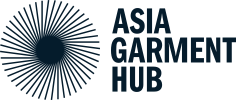Background
Textile waste is managed in various ways, including disposing at landfill sites operated by licensed waste disposal companies or resale to downcyclers, mechanical recyclers, waste traders, or waste handlers. Research into post-industrial textile waste flows in Cambodia reveals significant non-transparency and a lack of data regarding textile waste, with practices such as burning cutting scraps still prevalent. Furthermore, the Cambodian textile waste management system is characterized by a high number of formal and informal textile waste handlers operating within the country. The rise of inappropriate waste management practices has implications for both buyers and the textile sector as a whole.
Shifting from these deeply embedded practices requires a comprehensive approach to textile waste management, as well as the optimization of waste flows from manufacturers to recyclers.
Purpose
This guidebook aims to be a vital resource for sustainable textile waste management in Cambodia, specifically for textile waste handlers. It results from a Training Program for Textile Waste Handlers commissioned by GIZ FABRIC Cambodia and implemented by Sevea, designed to enhance sustainable practices in Cambodia's textile waste sector.
